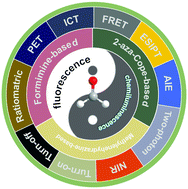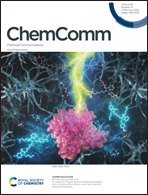Reaction-based fluorescent and chemiluminescent probes for formaldehyde detection and imaging
Abstract
Formaldehyde (FA), a reactive carbonyl species, is classified as Group 1 carcinogen by International Agency for Research on Cancer (IARC) in 2004. In addition, clinical studies have implicated that elevated levels of FA have been associated with different kinds of diseases, such as neurodegenerative diseases, diabetes, and chronic liver and heart disorders. However, in addition to the direct inhalation of FA in the environment, most organisms can also produce FA endogenously by demethylases and oxidases during the metabolism of amino acids and xenobiotics. Since FA plays an important role in physiological and pathological processes, developing reliable and efficient methods to monitor FA levels in biological samples is crucial. Reaction-based fluorescent/chemiluminescent probes have provided robust methods for FA detection and real-time visualization in living organisms. In this highlight, we will summarize the major developments in the structure design and applications of FA probes in recent years. Three main strategies for designing FA probes have been discussed and grouped by different reaction mechanisms. In addition, some miscellaneous reaction mechanisms have also been discussed. We also highlight novel applications of these probes in biological systems, which offer powerful tools to discover the diverse functions of FA in physiology and pathology processes.

- This article is part of the themed collection: Multimolecular Crowding in Biosystems


 Please wait while we load your content...
Please wait while we load your content...